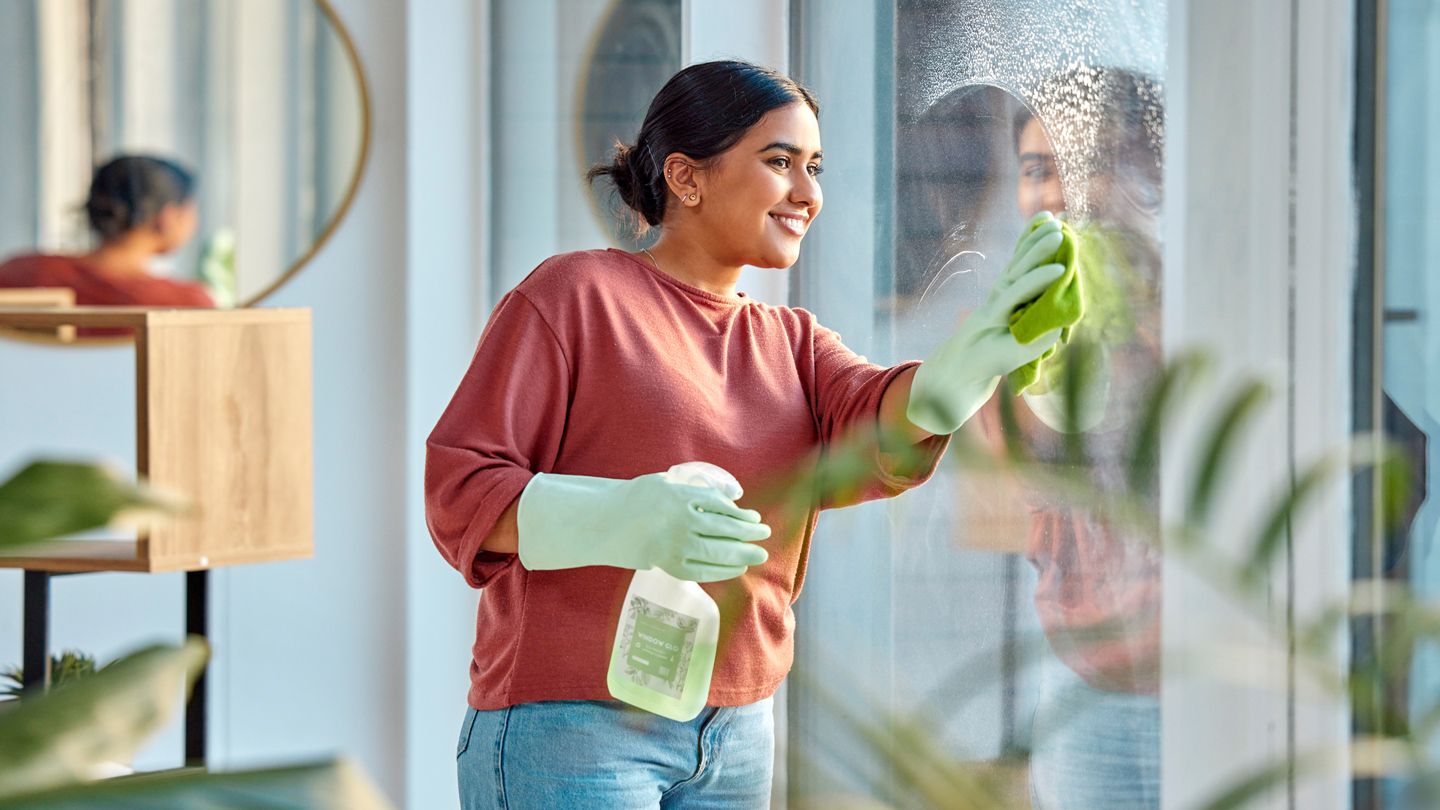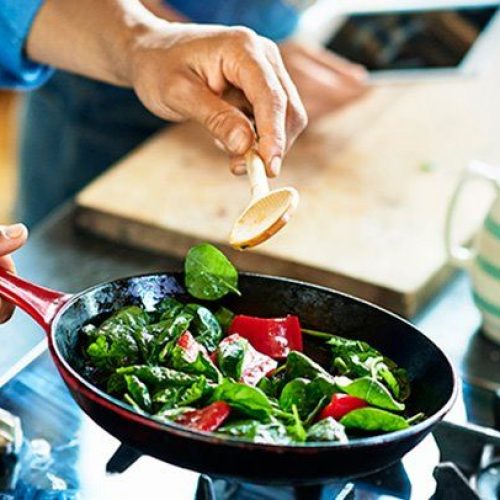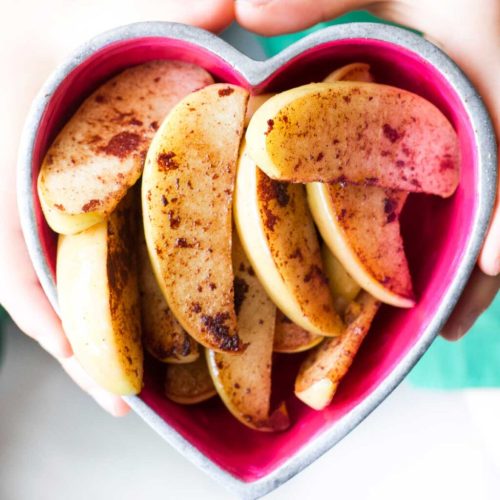To get food coloring off baby skin, gently wash the affected area with mild soap and warm water. Now, let’s dive into some simple and effective methods for removing food coloring from your baby’s skin.
Accidental spills and messy playtime can leave colorful stains on your little one’s delicate skin. While the vibrant hues of food coloring can be fun, they can also be a challenge to remove. Luckily, there are several tried-and-true techniques you can use to get rid of these stains and keep your baby’s skin clean and healthy.
We will explore different methods for safely removing food coloring from your baby’s skin without causing any irritation or discomfort. We will also discuss preventative measures you can take to minimize the risk of staining in the first place. So, let’s get started and ensure your baby’s skin remains free from any unwanted colors!

Credit: www.healthline.com
Why Food Coloring Stains Baby Skin
Food coloring is a commonly used ingredient in many processed and packaged foods. While it adds visual appeal to our favorite treats, it can also leave stubborn stains on baby’s delicate skin. Understanding why food coloring stains baby skin is important in order to effectively remove it and prevent any potential irritation or discomfort.
Different types of food coloring
Food coloring comes in various forms, each with its distinct set of colors and characteristics. Some common types of food coloring include:
| Type | Characteristic |
|---|---|
| Liquid food coloring | Comes in liquid form and is easily mixable |
| Gel food coloring | Has a thicker consistency and is commonly used in baking |
| Powdered food coloring | Comes in a powdered form and is often used in dry mixes or for dusting |
Chemical composition of food coloring
Food coloring is made up of various chemical compounds, which can vary depending on the type and brand. The most common chemical components found in food coloring include:
- Artificial dyes: These are synthetic color additives created through chemical processes.
- Natural dyes: Derived from natural sources such as plants, fruits, vegetables, and insects.
- Water-based solvents: Used as a medium for liquid and gel food coloring.
- Lake pigments: These are formed by combining dyes with metallic salts, creating insoluble pigments.
Why baby skin is more susceptible to staining
Baby skin is incredibly delicate and sensitive, making it more prone to staining from food coloring. There are several reasons why baby skin is more susceptible to staining:
- Thin and porous: Baby skin is thinner than adult skin, which allows colorants to penetrate more easily.
- Increased blood flow: Baby skin has a higher blood flow, making it more susceptible to discoloration.
- Underdeveloped barrier function: Babies have an immature skin barrier, making it easier for substances to penetrate and stain their skin.
- Gentle cleansing practices: Babies require gentle care, and rigorous scrubbing to remove stains can further irritate their skin.
Now that we understand why food coloring stains baby skin and the different types of food coloring, it’s time to explore effective methods for safely removing those stubborn stains.
Precautionary Measures To Take Before Removing Food Coloring
Before diving into the task of removing food coloring from your baby’s skin, it is crucial to take some precautionary measures to ensure their safety and well-being. By implementing the following measures, you can make the process smoother and minimize any potential risks or discomfort. Read on to learn about the precautionary steps you should consider before removing food coloring from your baby’s delicate skin.
Using protective clothing during messy play
When it comes to messy play, protecting your baby’s skin is paramount. By dressing them in appropriate clothing, you can prevent food coloring from staining their delicate skin. Consider using long-sleeved, full-length clothing that covers their arms and legs entirely. Additionally, opt for garments made from materials that are not only comfortable but also easy to clean. This way, any food coloring that does manage to come in contact with their clothing will not leave a permanent stain.
Creating a barrier with petroleum jelly or baby oil
An effective way to safeguard your baby’s skin from food coloring during playtime is by creating a protective barrier. Before engaging in any messy activities, apply a thin layer of petroleum jelly or baby oil to their exposed skin. This barrier acts as a shield, preventing the food coloring from directly coming into contact with their skin. Remember to focus on areas that are more susceptible to staining, such as the hands, face, and neck.
Using washable or non-toxic food coloring
When it comes to choosing food coloring for your baby’s playtime, opt for washable or non-toxic options. This ensures that even if the food coloring does come in contact with their skin, it will be easier to remove and less likely to cause any harm or irritation. Look for food coloring products specifically designed for children, as these are formulated with safety in mind. Checking the packaging for washability and non-toxicity guarantees a worry-free playtime experience.
Gentle Home Remedies To Remove Food Coloring Stains
Gentle Home Remedies to Remove Food Coloring Stains
Gently wipe with a wet cloth or sponge
When it comes to effectively removing food coloring stains from your baby’s skin, it’s important to start with the gentlest option. One of the simplest methods is to gently wipe the stained area with a soft, wet cloth or sponge. This can help to loosen and remove the coloring without causing any irritation or discomfort for your little one. Remember to use lukewarm water to ensure their delicate skin stays comfortable throughout the process.
Use mild baby soap and warm water
If wiping with water alone doesn’t completely remove the food coloring stain, you can try using a mild baby soap and warm water solution. This will provide a slightly stronger cleaning action while still being gentle enough for your baby’s skin. Simply lather a small amount of baby soap in your hands, then apply it to the stained area. Gently massage the soap into the skin using circular motions, being careful not to rub too aggressively. Rinse off with warm water and pat dry with a soft towel.
Apply a paste of baking soda and water
Another effective home remedy for food coloring stains on baby skin is to create a paste using baking soda and water. Baking soda is a natural exfoliant and can help to lift and remove stains without causing irritation. Start by mixing a small amount of baking soda with enough water to create a thick paste. Apply the paste to the stained area and gently massage it into the skin. Leave it on for a couple of minutes to allow the baking soda to work its magic, then rinse off with warm water.
Try using lemon juice as a natural stain remover
Lemon juice acts as a natural stain remover and can be an effective option for removing food coloring stains on baby skin. Squeeze fresh lemon juice into a small bowl and use a cotton ball or cloth to dab it onto the stained area. Let the lemon juice sit on the skin for a few minutes, allowing its acidic properties to help break down the stain. Afterward, rinse off with warm water and gently pat dry.
Avoiding Harsh Chemical Products
When it comes to keeping your little one’s skin clean and free from food coloring stains, it’s essential to prioritize their safety. Using harsh chemical products on delicate baby skin can often do more harm than good. In this section, we will explore the importance of using baby-friendly products, the potential risks associated with using harsh chemicals, and recommended alternative products for effective stain removal.
The importance of using baby-friendly products
Baby skin is much more sensitive and delicate compared to adult skin. It requires extra care and attention, especially when it comes to cleaning off stains such as food coloring. Using baby-friendly products is crucial to ensure the overall well-being of your little one. These specifically formulated products are gentle and free from harsh chemicals that could irritate or harm the sensitive skin of your baby.
Opting for baby-friendly products provides several benefits:
- Gentleness: Baby-friendly products are designed to be gentle on your baby’s skin, minimizing the risk of irritations or rashes.
- Mild Formulas: These products typically have milder formulas, reducing the chances of adverse reactions and skin dryness.
- Hydration: Many baby-friendly products contain natural moisturizing ingredients that help keep your baby’s skin hydrated and healthy.
Potential risks of using harsh chemicals on baby skin
While it may be tempting to grab any convenient stain remover from your household cleaning supplies, using harsh chemicals on your baby’s skin can pose potential risks and negative effects:
- Irritation: Harsh chemicals can cause irritation, redness, and even allergic reactions on your baby’s delicate skin.
- Dryness: Strong chemicals can strip away the natural oils from your baby’s skin, leaving it dry and prone to discomfort.
- Toxicity: Certain chemical substances found in household cleaning products can be toxic if ingested, raising safety concerns.
Recommended alternative products for stain removal
When it comes to removing food coloring stains from baby skin, it’s always best to opt for gentle, baby-safe alternatives. Here are some recommended products:
- Baby Oil: Applying a small amount of baby oil on the stained area can help loosen the food coloring, making it easier to wipe off.
- Mild Soap and Water: Gently washing the stained skin with a mild baby soap and warm water can effectively remove the food coloring stains without causing any harm.
- Baking Soda Paste: Mixing baking soda with water to create a paste and applying it to the stained skin can help lift and remove the food coloring stains.
Remember, always test any new product or method on a small patch of your baby’s skin to ensure they don’t have any adverse reactions. Prioritizing the use of baby-friendly stain removal options will help maintain your baby’s skin health and keep them safe from potential harm.
Seeking Medical Assistance
If you find food coloring staining your baby’s skin and you’ve tried various methods but haven’t achieved satisfactory results, it may be time to seek medical assistance. In some cases, the staining may be more than just superficial, requiring professional assessment and advice. In this section, we will discuss when to consult a pediatrician, how to identify if the staining is more than skin-deep, and professional advice on removing stubborn stains.
When to Consult a Pediatrician
If you notice that the food coloring stain on your baby’s skin is persistent and doesn’t fade after a few days, it’s important to consult a pediatrician. Additionally, if your baby shows any signs of irritation, rash, or swelling in the area where the food coloring is applied, it’s best to seek medical advice. A pediatrician can assess the condition, determine if there are any underlying issues, and provide appropriate guidance on how to proceed with removing the stain.
Identifying if the Staining is More than Skin-Deep
While most food coloring stains on baby skin are generally superficial and can be removed with simple home remedies, there may be instances where the staining is more than just on the surface. To identify if the staining goes deeper than the skin, observe if the stain is spreading or changing in color over time. If you notice any unusual changes, it’s crucial to consult a pediatrician to rule out any potential complications.
Professional Advice on Removing Stubborn Stains
When it comes to stubborn food coloring stains that are difficult to remove, seeking professional advice is recommended. A pediatrician can offer expert guidance on the best methods and products to use, taking into consideration your baby’s unique skin type and any potential sensitivities. They may suggest specific cleansers, gentle exfoliation techniques, or even prescribe medicated creams if necessary.
Remember, each baby’s skin is unique, and what works for one may not work for another. Seeking medical assistance ensures that you receive the most appropriate and personalized advice to effectively remove the food coloring stain from your baby’s skin.
Preventing Future Stains And Messes
Tips for managing messy playtime
Messy playtime is an important aspect of a child’s development, but it can also lead to stains and messes on their skin. Here are some tips to help you manage messy playtime:
- Use a smock or old clothes: Dress your child in clothes that you don’t mind getting dirty. A smock or an old t-shirt can help protect their skin from food coloring stains.
- Set up a designated play area: Create a specific area in your home where messy playtime can take place. This could be a table covered with a washable plastic tablecloth or an outdoor space.
- Protect the surroundings: Lay down some newspapers or a plastic sheet around the play area to catch any spills or splatters. This will make cleaning up easier later on.
- Use washable materials: Opt for washable art supplies and playdough that can easily be wiped off the skin. Look for non-toxic and water-based paints that are safe for children.
- Keep wipes or a damp cloth nearby: Have a pack of baby wipes or a damp cloth on hand to quickly clean any food coloring that gets on your baby’s skin. This will help prevent the stains from setting in.
- Promptly clean spills and stains: Act quickly if any spills or stains occur during playtime. Blot the area with a damp cloth or sponge, and use mild soap if necessary. The faster you address the stain, the easier it will be to remove.
Alternatives to food coloring for artistic activities
While food coloring is a popular choice for artistic activities, there are alternative options that can be used to prevent stains on your baby’s skin:
- Natural dyes: Explore natural dyes made from fruits, vegetables, or spices. Turmeric, beet juice, blueberries, and spinach are examples of ingredients that can be used to create vibrant colors for artistic activities.
- Non-staining markers: Look for non-staining markers specifically designed for children. These markers are designed to wash off easily from the skin and can provide a mess-free artistic experience.
- Finger paints: Instead of using food coloring, consider using washable finger paints. They come in a variety of colors and are safe for children to use.
Importance of supervised play and cleaning routines
Supervised play and consistent cleaning routines are essential when it comes to preventing stains and messes during playtime. Here’s why:
- Supervision ensures safety: By closely monitoring your child during messy playtime, you can prevent any accidents or mishaps that may result in more significant stains or messes. It allows you to intervene if needed and guide your child in safe and controlled play.
- Establishing a cleanup routine: Teaching your child to participate in cleaning up after playtime not only helps prevent future stains but also instills a sense of responsibility. Make it a habit to involve your child in the cleaning process, emphasizing the importance of tidying up after themselves.
- Consistency in cleaning: Regularly cleaning your child’s play area, toys, and utensils ensures that any remnants of food coloring are removed, reducing the chances of accidental staining in future play sessions. Incorporate cleaning into your daily routine to maintain a clean and hygienic environment for your child.
By following these tips and incorporating alternative artistic activities, you can help prevent future stains and messes on your baby’s skin while still fostering their creativity and sensory development during playtime. Remember to supervise their play and establish a regular cleaning routine to ensure a positive and stain-free experience.
Frequently Asked Questions On How To Get Food Coloring Off Baby Skin
How Do You Remove Food Coloring From Baby Skin?
To remove food coloring from the baby’s skin, start by wiping the area gently with a warm, damp cloth. If the stain persists, try using a gentle baby soap and water. Avoid using harsh chemicals or scrubbing too hard, as this can irritate the skin.
Can Food Coloring Harm A Baby’s Skin?
While food coloring is generally safe, it can cause temporary staining on the skin. However, it is important to ensure that the baby does not ingest or rub the coloring into their eyes or mouth. If any skin irritation occurs, consult a pediatrician.
How Long Does Food Coloring Stay On Baby Skin?
The length of time food coloring stays on the baby’s skin can vary depending on the intensity of the coloring and the baby’s skin type. In most cases, the stain will fade within a couple of days with gentle cleansing and moisturizing.
Conclusion
Removing food coloring from baby skin is a simple process that requires gentle and effective methods. By using ingredients found at home like oil or baking soda, you can easily remove stubborn stains without harming your baby’s delicate skin. Remember to be patient and take extra precautions to prevent future stains.
Keeping your baby’s skin clean and healthy is essential for their overall well-being.











